The post Why can I text from my phone but not from my computer? appeared first on JD Lasica.
]]>But now there’s a new entrant for problem solving: AI.
For the past year, I’ve been combing through post after post on various sites and forum, encountering dozens of different solutions for how to solve a problem that’s been vexing me for the past year:
Why can I send and receive texts from my iPhone 15, but I’m not able to text or receive messages to the same people from my desktop computer or laptop? Oddly, some messages came through, but others did not. Was it a setting on my computer? In iCloud? On my phone?
And so I finally turned to ChatGPT4 … and lo and behold, the very first solution it proposed did the trick. If you don’t know about this setting, you’d almost surely never find it, so deeply is it buried in the phone’s settings.
I thought I’d share ChatGPT4 suggestions for anyone still using old-fashioned search to solve this particular texting problem on your computer, at least when it comes to iOS and Macs. Here it is:
Solutions for using iMessage on your computer
Your issue with not being able to send or receive text messages from some contacts on your desktop computer or laptop, despite being able to do so on your iPhone, can be due to several factors, especially within the Apple ecosystem. Let’s go through some of the most likely reasons and their solutions:
1. iMessage & Text Message Forwarding Not Enabled
If you’re able to send iMessages (messages in blue bubbles) but not SMS texts (messages in green bubbles) from your Macs, it might be because Text Message Forwarding is not enabled.
Fix:
- On your iPhone, go to Settings > Messages.
- Tap Text Message Forwarding.
- Enable the toggle next to your iMac and MacBook Air.
This allows SMS texts to be sent and received on your Macs through your iPhone.
2. iCloud Account & Settings
Ensure that all devices are signed in to the same iCloud account and that iMessage is enabled on all devices.
Fix:
- On iPhone: Go to Settings > [Your Name] > iCloud and ensure that Messages is turned on.
- On Mac: Open Messages, go to Preferences > iMessage, and ensure you’re signed in with the same Apple ID.
3. Network Issues
Sometimes, being on the same Wi-Fi network doesn’t necessarily ensure a seamless connection due to network restrictions or issues.
Fix:
- Restart your router.
- Ensure that no network restrictions are applied that might prevent iMessage or iCloud services from communicating effectively.
4. Software Updates
Outdated software on any of the devices might cause compatibility issues.
Fix:
- Update your iPhone to the latest iOS version.
- Update your iMac and MacBook Air to the latest macOS version.
5. Date & Time Settings
Incorrect date and time settings can cause issues with iMessage delivery.
Fix:
- Ensure that Settings > General > Date & Time on your iPhone and the corresponding settings on your Macs are set to Set Automatically.
6. Check iMessage Settings
Make sure iMessage is set up correctly on all devices.
Fix:
- On iPhone: Go to Settings > Messages and ensure iMessage is turned on.
- On Mac: Open Messages, go to Preferences > iMessage, and check if all the settings align with those on your iPhone.
7. Restart Devices
Sometimes, a simple restart of your devices can resolve unexpected issues.
Fix:
- Restart your iPhone, iMac, and MacBook Air.
8. Check for Blocked Contacts
Ensure that the contacts you’re unable to message from your computers aren’t accidentally blocked.
Fix:
- On iPhone: Go to Settings > Messages > Blocked Contacts and ensure the contact isn’t blocked.
If none of these steps resolve the issue, there might be a more specific problem at play. In such cases, contacting Apple Support for direct assistance might be the best course of action. They can provide more personalized troubleshooting based on the specifics of your setup and any error messages you’re receiving.
The post Why can I text from my phone but not from my computer? appeared first on JD Lasica.
]]>The post Will 2023 be the year AI dominates culture? appeared first on JD Lasica.
]]>But the past half year, and particularly the past six weeks, leads me to think that AI will be front and center for an increasing number of us — particularly those in the so-called professional class, such as writers, journalists, academics, researchers … and now even artists.
Some of this may turn out to be merely diverting. But much of it will be epoch-changing and usher in fundamental changes to society.
On the diverting yet utilitarian side of the ledger comes the Lensa AI app, available on iOS and Android. If you want to have some fun, pony up $2.99 and try its Magic Avatars. You upload 12 to 20 profile images of yourself and within 20 minutes it spits back an assortment of fanciful images of yourself in various outfits (none of which you’ve ever worn) in a couple of dozen high-fidelity variations. For now at least, I’m using one of them for my social media profiles on Twitter and Facebook.

Likely to have a more long-term impact are the new crop of text-to-image generators, starting with DALL-e but quickly outpaced by Stable Diffusion and particularly Midjourney. The imagery coming out of these new AI tools runs the gamut from pedestrian and derivative to jaw-droppingly awesome. Above and below are a couple of examples.

Some of these images are just astonishing. There is, of course, considerable chatter about the ethical implications of all this, given that the works are derived from a catalogue of hundreds of millions of online images and no credit or attribution is given to the source material. We’ll see how that plays out over time.
Of equal or even greater import, OpenAI released ChatGPT on Nov. 30, and immediately changed the world. Writers, journalists, researchers and others have been having a field day, testing out ChatGPT’s strengths and shortcomings. It’s not a search engine but an advanced AI-powered chatbot launched by OpenAI that interacts in a conversational style to answer questions, to translate languages, to create prose and art — and an untold number of other applications.
As ChatGPT describes itself:
ChatGPT is a conversational Al system that is based on the GPT-3 (Generative Pretrained Transformer 3) language model. It is capable of generating human-like responses to text input, allowing it to engage in natural language conversations with users. Unlike other chatbots, which are typically limited to pre-programmed responses, ChatGPT can generate responses on the fly, allowing it to have more dynamic and varied conversations. Because it is based on the powerful GPT-3 model, ChatGPT has a vast knowledge base and is able to understand and respond to a wide range of topics.
ChatGPT takes a stab at short-form fiction
Most people are likely using the new tool for useful day-to-day things like creating interesting recipes or seeing which speakers you might want to invite to an event. But I’m curious about its fiction-writing abilities.
Now, I was a bit constrained because the programmers at OpenAI don’t let you use ChatGPT to cause harm or violence to others — quite the drawback if you’re a thriller author. So I input these instructions:
Please write a fictitious scene in a novel involving a woman who is partly a human and partly an artificial intelligence and robot and becomes recruited by the CIA to gather intelligence on a foreign adversary.
And here is what ChatGPT came up with:
The sun was just beginning to rise over the New York City skyline as Chloe stepped out of her apartment building. She had always loved this time of day, when the city was just waking up and the streets were still relatively empty. As she walked down the sidewalk, she couldn’t help but feel a sense of excitement. Today was the day she had been waiting for her entire life.
As a hybrid of human and artificial intelligence, Chloe had always felt like she was meant for something more than the mundane tasks that had been assigned to her. She had always known that her unique blend of human intellect and robotic efficiency would be valuable to the right organization. And today, that organization had finally come calling.
As she made her way to the designated meeting place, Chloe couldn’t help but wonder what the future would hold. The Central Intelligence Agency had recruited her to gather intelligence on a foreign adversary, and she knew that the job would be both challenging and rewarding.
When she arrived at the meeting place, Chloe was greeted by a group of serious-looking agents. After introducing themselves, they led her to a secure facility where she was given a briefing on her mission.
“As you know, Chloe, your unique abilities make you the perfect candidate for this mission,” one of the agents explained. “We need you to gather intelligence on a foreign adversary that has been causing problems for us for some time. Your ability to hack into their systems and gather information without being detected will be crucial to the success of this mission.”
Chloe nodded, her excitement growing. She knew that this was the opportunity she had been waiting for, and she was ready to take on the challenge.
Over the next few weeks, Chloe worked tirelessly to gather intelligence on the foreign adversary. She used her hacking skills to infiltrate their systems and gather information, all while remaining undetected. As she delved deeper into the operation, she began to uncover a plot that threatened the security of the entire country.
As she pieced together the clues and passed them along to the CIA, Chloe knew that she was making a difference. And when the mission was finally complete and the threat had been neutralized, Chloe felt a sense of pride and accomplishment that she had never experienced before. She knew that she had made a real difference in the world, and that was a feeling that she would never forget.
ChatGPT won’t be putting John Grisham or Tom Clancy out of a job any time soon. But a new, more powerful version is due before mid-year. The possibilities boggle the mind.
Further readings
For further readings (and listenings) on the subject, see:
• How Far Can AI Go? (Shelly Palmer)
• A Skeptical Take on the AI Revolution (The Ezra Klein Show podcast)
• Chat GPT Puts Google on Notice (Hard Fork podcast)
• How to Create Synthetic AI Art With Midjourney (How-to Geek)
• Stable Diffusion Image Generator
• Anyone can use this AI art generator — that’s the risk (The Verge)
The post Will 2023 be the year AI dominates culture? appeared first on JD Lasica.
]]>The post Discord’s broken log-in authentication appeared first on JD Lasica.
]]>Let me show you the exact steps I’m taking, with excruciating care to make sure I do everything by the book, and to demonstrate that it still fails to get past Discord’s broken algorithm.
Normal log-in at Discord
Step 1: I go to
I go to https://discord.com/login
I enter my US-based mobile phone #
I choose forgot password because I forgot to write it down when I registered in April.
Step 2: It takes me to the “Something is going on here” screen.
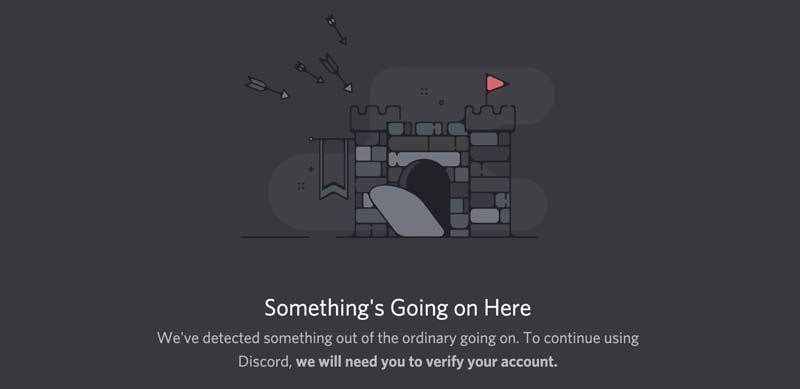
“We will need you to verify your account.” I click it.
Step 3: I’m taken to https://discord.com/channels/@me
It asks me to verify by email. I enter [email protected] into the email field. I get the error message “Email is already registered.”
Well, of course it is. You just asked me to enter my registered email address. What the hell, Discord?
OK, let’s try again.
Workaround #1
I abandon the desktop and go to mobile. In the Discord app, I try to log in unsuccessfully. I choose to reset my password. Before it will reset the password, Discord sends me a security code by text.
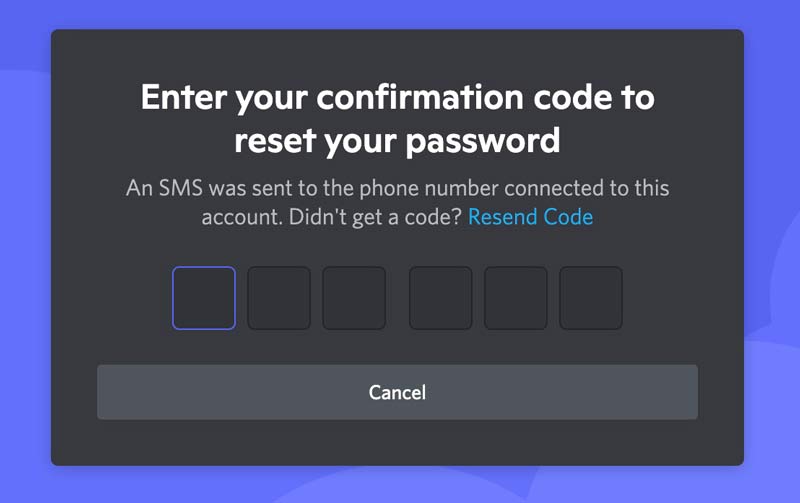
I enter it into my iPhone. So far, so good. This is how two-step authentication is supposed to work.
At first blush, it accepted the code. But then I try to log in to Discord with my mobile number and the password that I just successfully changed. For any Web platform, two-step authentication should be enough, but not for Discord! Instead, I’m met with this nonsensical screen.
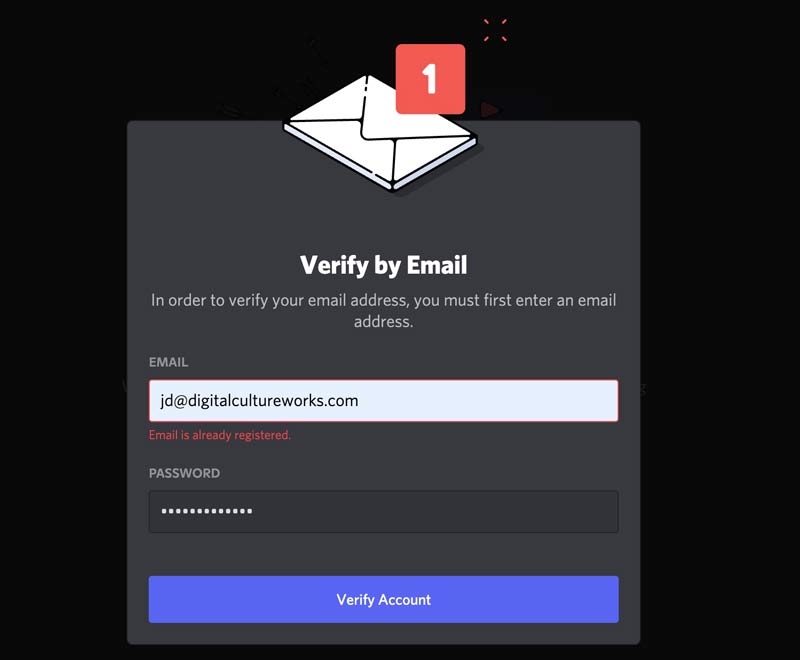
What? Why are you asking for my email address? I’ve probably registered three email accounts with Discord over the years but — here’s the key — I only have one mobile number. Which I just proved to you I own.
I enter the email address I think I may have used. I get the error “Email is already registered.”
Yes. By me.
I try Discord Support
A helpful Discord support staffer responds to my travails with these suggestions:
- Open an incognito browser window. (DONE)
- Enter your phone number instead of your email (DONE)
- Click ‘Forgot Password’ (DONE)
- Follow the link in SMS to reset the password. (DONE, successfully entered the security code)
- Log into the account
I can’t. For some reason, the system always throws up the “Something’s going on here” screen at this step of the process. There’s no reason it should be doing that.
Something is going on here? Yes, I’m trying to log into my own account, and I just verified that I own it!
I respond to Discord Support and get this response:
You’ll need to first login to the original Discord account tied to the phone number on the desktop app, or the browser on your computer or mobile device.
>Then, head into User Settings (by clicking on the cog icon in the bottom left), and then remove the phone number currently in the My Account tab!
But: I’m not able to log into the original Discord account. That’s the whole point of this support ticket.
Let’s try a new account!
A friend suggested I ditch my existing Discord account and start fresh with a new email and phone number. Fine.
I register to get a free voicemail number with Google Voice. But apparently it doesn’t support text. Back to square one.
I download the TextNow app.
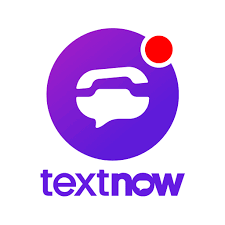
OK, awesome. I get a new local mobile number and test it, verifying that I can send and receive texts.
I go to register a new account on Discord. First, it sends me a verification code. For that, TextNow charges a $4.99 annual subscription. OK, fine, I pay it. I enter the verification code.
Discord gives an error message: “Please use a valid mobile phone number, not a VOIP or landline number.”
I try one last time on my iPhone to log in with a second email address and the password I just changed it to, and I get this:
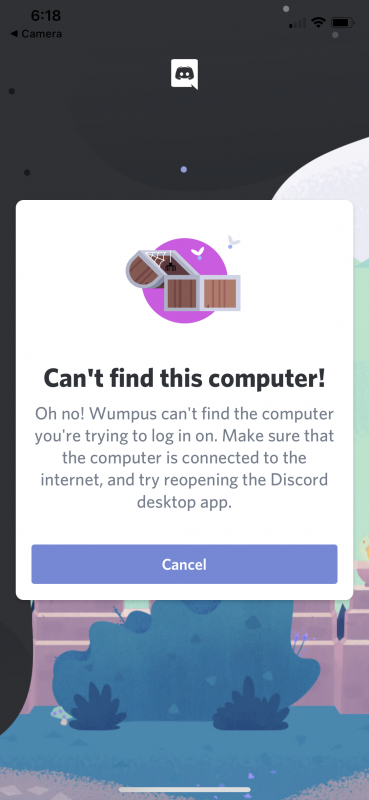
Which is odd, because I only have one phone and one computer.
So, I will try Discord Support for the third time. All the kids in crypto seem to love Discord, which is the only reason I’ll keep trying to get in so I can accept the dozens of Discord invitations I’ve received over the weeks.
Something’s Going on Here, all right.
I’ll update this post when someone at Discord solves the issue.
Update: After a third set of back-and-forths wtih the good folks at Discord Support, they reset my phone number, I ditched my old accounts and started a new account with one of my free email addresses … and added my mobile number to it. A two-minute automated process should not have taken weeks.
The post Discord’s broken log-in authentication appeared first on JD Lasica.
]]>The post BingeBooks launches a promising book discovery site appeared first on JD Lasica.
]]>If you head over to BingeBooks and register (for free), you’ll be able to do quite a few cool things:
-
-
Read the opening chapters of tens of thousands of bestselling books from traditional and indie authors — on any device
-
Browse the full collection of books of nearly any author in an easy-to-use interface
-
If they write in series, you can see all their series books in order
-
Ask questions and interact with authors
-
Create visually stunning book lists
-
Join book groups
-
Organize your digital book life
-
Read and write book recommendations
-
Buy what you enjoy, with quick links to retailers for print books, e-books and audiobooks.
-
Find trending deals and discover new releases
-
BingeBooks is also a burgeoning social network, so I hope you’ll follow me on my author page. And if you’ve enjoyed any of my books, please consider leaving a book recommendation for it.

How BingeBooks is different
How is BingeBooks different from Goodreads, BookBub or all the other book sites out there? Let’s count the ways:
- We’re independent. We’re not owned by a mega-corporation, as Goodreads is, or financed by deep-pocketed investors like BookBub. We’re a grassroots enterprise run by authors for readers.
- We’re conversational. We’re out to encourage conversations and interactions between authors and readers. Sites like Amazon actually prohibit authors from responding to readers.
- We have no secret agenda. We’re not a retailer and we’re not here to upsell you or promote products you don’t want. We’re an online community, knowledge base and resource.
- We’re mobile-friendly. Unlike Goodreads, readers can dive into the opening chapters of tens of thousands of books in our catalog on any mobile device.
- We give you a private space. We give every user a personalized private dashboard called My Reads. Save any book, author or article on the site to your own private cubbyhole.
- We’re retailer-agnostic. If you want to buy a book, we give you a choice of several retailers, and we’re not limited to just eBooks.
- We offer an end-to-end experience. You don’t have to hop from site to site to see the book description, read a sample, see readers’ recommendations or listen to an audiobook excerpt.
- We can anchor your reading experiences. We provide the easiest, most modern way to organize your digital book life and show off your expertise by sharing lists featuring beautiful book covers.

There’s more, but those are the main reasons my fellow authors and I launched the site.
What’s ahead? Onboarding more authors! To be sure, we’re a platform for readers to share book recommendations. But in the coming weeks we’ll also be opening our platform to any author in the world who wants a professional-looking author page and a place to show off their works. For free.
I hope to see you at BingeBooks!
The post BingeBooks launches a promising book discovery site appeared first on JD Lasica.
]]>The post Why cybersecurity should be front of mind for journalists appeared first on JD Lasica.
]]>
Post by Jack Warner
TechWarn
While anyone who conducts any kind of digital activity is at risk of a security breach or cyber attack, journalists are especially vulnerable to surveillance and hacking by malign actors. The communications and data kept on the devices of those reporting the news is of particular interest to government agencies, large corporations, small businesses and many different kinds of organizations.
When journalists concern themselves with cybersecurity and take defensive measures, they not only protect their own personal data and that of their news organization but also they also strike a blow for the independence and integrity of the press. In some cases, data protection is even more significant, rising to a critical safety issue.
Why journalists need to prioritize cybersecurity
Journalists should think of digital cybersecurity as equally important as reporting on current events with integrity and passion. In particular, reporters working on investigative stories or exposes are at risk, and data can become a matter of life and death.
Last month, the exiled Pakistani journalist Sajid Hussein was found dead in Sweden. His case highlights the risk to reporters who undermine hostile regimes. The very nature of the job puts journalists at the forefront of unending scrutiny and surveillance. Such cases are becoming all too common.
Take the tragic tale of Italian student Giulio Regeni, who was conducting research on the controversial topic of independent trade unions in Cairo, Egypt. Regeni was abducted and subsequently tortured to death in early 2016. Many commentators believe Egyptian security services were involved in his death.
Regeni’s physical security was at stake, as many journalists experience on a daily basis. Unprotected data can compound the risk to physical safety — especially as certain governments and other organizations seek to silence reporters.
Sources must be protected as a fundamental principle
Many journalists keep a long list of anonymous sources and relationships with people in the know. The onus is always on the journalist to protect the identity of their sources, both in regard to ethics and legality. Sources have a certain level of trust in the journalists they maintain contact with and if this trust is broken, the journalist’s integrity is compromised.
Regaining the trust of anonymous leads becomes harder and the reporter may struggle to rebuild his or her reputation. Protecting sources and the information they provide is key.

Technological advancements open new avenues for threats
The potential for cybersecurity threats evolves with every new technology that hits the market. Often before the user can learn how to protect themselves, hackers have already figured out various methods of undermining the newly launched technology. Hackers, both individual actors and the state-sponsored variety, are increasingly aware of potential access points.
Journalists need to be aware of the risks and vulnerabilities that come with each app, program, or device they use and take steps to mitigate the risk of a breach.
Tools journalists can use to secure devices
By taking several small yet highly effective steps, journalists can minimize their vulnerability and protect their digital security.
Anonymize and encrypt internet traffic with a VPN
A VPN, or Virtual Private Network, is a powerful tool that anonymizes Internet activity by disguising device location and protecting data from unsecured or potentially dangerous Wi-Fi networks.
A VPN also allows access to websites that may be restricted in certain regions, so users can bypass strict censoring regulations in many areas. For example, a journalist reporting on a crisis in a country where the government censors content that doesn’t align with their political agenda can freely gain access to websites and streaming media with a VPN installed.
VPN software can be used on desktop computers, laptops, tablets and mobile devices. Many VPN providers allow multiple downloads across all devices with one single subscription.
Delete metadata, navigation history and cookies
Hackers know how to find an incredible amount of information about anything and anyone on their devices, including someone’s career and what stories they’re currently working on.
Sensitive details that can help cybercriminals can lay hidden in a user’s metadata, navigation history and cookies. These details should be deleted thoroughly and regularly to mitigate the risk of a leak or breach. Start practicing clearing these items from your browser as a matter of course.
Be aware of IoT devices
Internet of Things (IoT) devices record information around us all the time. The most common offender is a commonplace smart home technology such as Alexa, but devices as diverse as fridges, baby monitors and home security cameras can all represent a security risk.
Should you need to hold a classified discussion or make a sensitive phone call, a thorough walkthrough of the area can catch any IoT devices that can eavesdrop on confidential conversations.
Create secure backups
Using a cloud storage system and/or external hard drive is invaluable in preserving your work. As cloud storage technology improves, this is the best option in terms of cost, security and access — but a hard drive can also prove useful, so long as the user can keep it secure (that is, physically locked up).
Enable private browsing
The only browsers that should be used are those that allow browsing in private mode, especially when the purpose is to dig for controversial information. When private browsing is enabled, any information that could be pulled from the activity will not be saved by the browser to the current computer or device when the window is closed. This includes cookies, browsing history and details entered into form fields. Again, a good habit to pick up and maintain.
Use data encryption and strong passwords
Rather than trying to protect data file by file, a journalist is far safer when his entire machine or user account is encrypted. This encryption should be secured with a strong password that is unique and not easily determined by a hacker running a dictionary attack.
PIN numbers and passwords for all accounts should be all individually unique and difficult to crack. Journalists should take advantage of secure password managers that help keep track of log-ins and passwords across the board. These can only be accessed by another unique and secure, master password.
Journalists taking all of the above-listed security measures to protect themselves and their sensitive data are better positioned than those who view cybersecurity as an afterthought. Journalism is an important industry and although it comes with a distinctive set of risks, the world is a better and more informed place because of the critical work produced by unrelenting reporters.
The post Why cybersecurity should be front of mind for journalists appeared first on JD Lasica.
]]>The post Protected: Membership Fees: Pick your best option! appeared first on JD Lasica.
]]>This content is password protected. To view it please enter your password below:
The post Protected: Membership Fees: Pick your best option! appeared first on JD Lasica.
]]>The post Infographic: The intriguing ways AIs show humanity in movies appeared first on JD Lasica.
]]>A scene from the climax of “2001: A Space Odyssey.”
Post by Nelson Cicchitto
Nowadays you can find AI in all sorts of movies. Whether you like action-adventure, sci-fi or even romantic comedies, artificial intelligences show up in these genres and play fascinating roles.
We’ve completed a study of the top AIs in film and came away with a new appreciation of how screenwrites are depicting this emerging technology. One of the most interesting things about AI is that their inherent nonhuman nature showcases what movie writers most believe to be true about humans.
Here’s our ranking of AIs’ appearances on the silver screen and what kind of statement the movie makes about our humanity. And below is our infographic rounding up the evil and good depictions of AI characters in the movies, from R2D2 and Data to Skynet.
HAL 9000 (2001: A Space Odyssey) – A deadly dose of humanity
Some individuals see HAL 9000 as one of the most quintessential evil AI. But what’s more interesting than its moral choices was HAL’s uncanny humanity. The humans in “2001: A Space Odyssey” act eerily calm and nonplussed. However, HAL 9000 exhibits humanlike traits such as jealousy and paranoia, which ultimately lead to the mission’s failure and astronauts’ deaths.

Ava (Ex Machina) – Making difficult choices
“Ex Machina” has only four characters: three humans and one AI. By the end of the movie, only Ava, the AI, makes it out alive. However, she does this by manipulating two of the humans and even leaving one of them for dead. If this was truly the only way for her to be free and live an uninhibited life, does it still make her evil? When it’s an AI asking the question, the answer sometimes seems a little more uncertain.
VIKI (I, Robot) – Logical but heartless
Following in the steps of HAL 9000, VIKI is a hyperintelligent robotic core that decides to kill certain humans to try and keep humanity alive for longer. This is a classic moral dilemma: Is it all right to kill someone, even an innocent person, if by killing them you make the world a better place? Plenty of human characters could benefit from the same hard thinking.

Ranking AI in Movies: The Good, The Bad, and the Buggy Created By: Avatier.com
R2-D2 (Star Wars) – Saying a lot without words
R2-D2 is one of the most beloved and iconic “Star Wars” characters in the entire franchise. But on the surface, the robot’s popularity is somewhat baffling. After all, it never utters a single line of dialogue, and its character design isn’t even humanoid. Why, then, is it such a beloved part of the franchise? Quite simply, R2-D2 oozes with charm and empathy. George Lucas didn’t have to create a character with snappy dialogue or a cool design — he just had to make one that tugged at people’s heartstrings.
Bender (Futurama) – Unlikeable likeability
OK, Bender is on TV, not from the movies. Still, there are all sorts of mixed-morality human characters on TV. Bender is very much one of those characters, except for the fact that he’s a robot. He’s rude, womanizing, mean and manipulative, but in some moments, he does seem to show genuine emotion. In fact, many of his negative traits are the reasons why audiences like him so much. With such a rich, humanlike character, does it even matter that he’s not really a human?
Conclusion
Every piece of a story showcases something about the screenwriters who wrote it. Next time you encounter an AI on screen, consider the story behind the story: Look at the tale on a meta level and learn from it rather than just watching it passively. Think about what the character represents and the message it’s sending rather than just the surface-level actions depicted on screen.
Who’s your favorite AI character from the movies, and why?
Nelson Cicchitto is CEO of Avatier Corp., a cloud identity management provider. He’s also an avid movie fan.
The post Infographic: The intriguing ways AIs show humanity in movies appeared first on JD Lasica.
]]>The post 6 things indie authors should know about audiobooks appeared first on JD Lasica.
]]>INDIE AUTHORS
But there are drawbacks — chiefly, the amount of time, effort and sometimes money it takes to produce a solid recording.
The last time I checked, only about one in 10 indie authors bothers to go through the trouble of producing an audiobook to accompany a new book release. That’s bound to change. More than 67 million Americans now listen to audiobooks each year. Given current trends — particularly consumers’ lifestyle habits, with books consumed on the go and in bits and snatches — some experts predict audbook sales will overtake ebook sales in a few years.
Here’s a 4-minute sample from “Catch and Kill.” Go to the book’s page on Audible.
With that in mind, here are some things I’ve learned along the way now that I have two audiobooks under my belt. We can boil down the audiobook publishing process into these six steps.
Step 1: Get an audiobook version of your cover made
1When I started out, I was befuddled by ACX’s requirement that I upload a square cover for my audiobook. What? Book covers aren’t square! It took a bit of reverse-engineering to turn a traditional book cover into a 2,400 by 2,400-pixel image.
With book two, I paid the design house a little extra for an additional file for the audiobook version. So it pays to work this out with your designer in advance, since you don’t want to be fooling with cover dimensions at the last minute.
Step 2: Choose a platform to create your audiobook
2For ease of creating your audiobook, ACX rules the roost. ACX, Amazon’s Audiobook Creation Exchange, is the easiest way to go for most indie authors. By using it, your book will be for sale on Amazon, Audible and iTunes. That said, ACX is not as drop-dead simple as it should be.
ACX is a sort of marketplace where authors and rights holders can collaborate with narrators and producers to, in effect, self-publish audiobooks. Chances are, this is where you’ll find your narrator if you decide to go that route.
During the production process, you’ll be creating separate audio files for each chapter in your book, as well as front and back matter such as opening and closing credits, any dedication, epigraph and so on. ACX is picky about how each chapter sounds (including things like sound levels and ambient noise), so this should ideally be done in a production studio environment — or a quiet home office.
The author typically acts as a sort of producer-in-chief, so once you’ve completed Step 2 below and have the finished files in hand, you upload them one .mp3 file at a time to the ACX site via a Web interface. Once the staff at ACX reviews the quality, they either greenlight the title or kick it back to you for some tweaks. That’s what happened to us with my first audiobook, and narrator Denise Howell happily made the fixes. The review process took two weeks for my first audiobook and one week for book two, which is why you shouldn’t expect to have your audiobook ready for your book’s launch day.
I wrote about the ACX production process and showed off some screenshots in this post last year. The article also covers Whispersync, Amazon’s coolio technology that lets you read on your phone or device at breakfast, then get in your car and continue listening where you left off, and when you get home, cook dinner while listening on your Echo, all without losing your place.

Step 3: Choose a narrator
3After you’ve written your masterwork, your most important decision comes down to who’s going to narrate the script. To save on costs, many authors choose to do it themselves, and if you have honey-coated pipes, time to spare and the right recording equipment (including a good desktop microphone), then go for it!

(Image via Pixabay)
I went in a different direction. After all, in fiction a voice actor can lend extra depth to a manuscript through a range of voice ages, accents, dialects and genders — something that few authors can pull off.
If you hire a professional, your costs will depend on the length of your book and the hourly rate of your narrator. In my case, for book one I prevailed upon an old friend, Denise Howell, who knows a lot about audio production, given that she’s been hosting the This Week in Law podcast for years. Denise and I came to a financial arrangement where I paid her a lump sum for her narration work, so I’m out of pocket that sum but retain the rights to all royalties going forward (see Step 3), less ACX’s take.
For book two, I decided, like a good startup founder, to do some A-B testing. So I chose a male narrator after reviewing several narrators’ short audio auditions on ACX. You can request sample narrations of one of your chapters, and a half dozen people applied. You get to hear how your work sounds when read by somebody else. In my case, I thought the Audible narrations by Tom Taverna were a good fit for a thriller. We collaborated through ACX and over email exchanges. We agreed to split the royalties, so I paid no production costs. Audible gets 60% share of sales, while Tom and I each get 20% of the royalties. Audible sets its own prices, and you’ll get more from the sale of an audiobook than an ebook.
I’ll know in a year or two which approach — flat payment vs. royalty split — was the better option.
Step 4: Give your book a ‘proof-listen’
4You know how valuable beta readers and/or proofreaders are before publishing your manuscript? The same principle applies to your audiobook. Alas, even though you’re offloading the work of narrating the book, you’ll still need to listen to every spoken word of it. As your narrator records chapters, or perhaps all at once, she’ll send you the completed chapters in the ACX dashboard for you to approve. You’ll want to listen and make detailed notes. Did she mispronounce the name of a character or city? Did she skip over a sentence? This is your chance to “proof-listen” to your audio samples. Both of my books were 11 hours in length, plus it took time to run through two rounds of fixes, so you’ll need to set aside a full day or two.

Step 5: Choose a distribution platform/retail store
5When self-publishing for the first time, every indie author needs to decide whether to go wide or choose Kindle Direct Publishing as well as its KDP Select option, which scores you access to Amazon’s millions of subscribers to Kindle Unlimited. I published both my thrillers, Biohack and Catch and Kill, in Kindle Unlimited (which costs subscribers $9.99 a month).
And now we see the same bifurcation occur in the audiobook world. Audible, owned by Amazon, is the big kahuna of the space, with tons of subscribers paying $14.95 a month for access to its catalog of audiobooks. Unlike the all-you-can-eat buffet of Kindle Unlimited, Audible subscribers are given a credit for one audiobook a month, and you own all Audible audiobooks in your library even if you cancel your subscription, plus you get access to two of six Audible Originals on the first Friday of every month for no additional cost. For authors, if you choose to go with ACX in Step 2, then Audible in Step 5 is part of the bargain.
For those who choose another route, you can opt for a service such as Findaway Voices (in partnership with Draft2Digital, Author’s Republic or other small platforms, which generally let authors set their own prices and distribute their audiobooks across multiple retail channels. One additional downside of using the ACX-Audible duopoly: Your audiobook won’t be available to library listeners.

Step 6: Spread the word
6Once you’re live on retail sites like Audible and iTunes, it’s time to spread the word! If you’re already past your book launch, do you need to create another marketing campaign all over again? Probably not. But you should try to get the audiobook into the hands of audiobook lovers in your genre. Start by claiming the 50 free promo codes that ACX provides you — 25 for U.S. Audible listeners and 25 for U.K. residents.
Next, you’ll need some initial reviews, so go ahead and pony up $12 to take advantage of the mailing list built up by Audiobook Boom!. They’ll circulate your title in their weekly newsletter, and within a couple of days you’ll likely have more than 50 names and email addresses in your Audiobook Boom spreadsheet waiting for you to contact them. For instance, they have 2,600 subscribers signed up for mysteries, 2,500 for thrillers and 1,500 for romance. In return for listening to your audiobook for free, they agree to post a review. (Note that none of your Amazon reviews carry over to your Audible book page.) Importantly, these folks are not just freebie-seekers; you get to check out the audiobook reviews they’ve left for other titles on Audible.
Ready to enter the audiobook world?
No doubt about it, audiobooks are here to stay. And here’s one final interesting trend: Thirty percent of frequent audiobook listeners report using their voice-enabled personal digital assitant, such as Amazon Echo or Google Home, to read an audiobook out loud.
So should you take the plunge or not? Written Word Media advises: “Producing an audiobook runs into the thousands of dollars or requires giving up significant royalties and is still a significant investment for authors. New authors who find the price tag too steep are best off focusing on building their catalog of ebooks first. Authors who are looking to invest in their publishing business should definitely have audiobook expansion on their list.”
Smart advice.
Questions? Have your own advice to share? Leave a comment below.
In our Indie Authors series
- High-tech thriller ‘Biohack’ is now on Audible
- 10 books to make you a better writer
- 8 tips on how to manage a book launch team
- ‘Biohack’ book release: Talking about indie publishing
The post 6 things indie authors should know about audiobooks appeared first on JD Lasica.
]]>The post Audiobook giveaway: 50 chances to win a new thriller! appeared first on JD Lasica.
]]>To celebrate, I’ve organized a giveaway of 50 audiobooks — 25 U.S. and 25 U.K. Audible copies.
To enter, just answer the question below, then enter your first name and email. That will subscribe you to my Best of Indie Readers’ Circle newsletter with twice-a-month updates about the best free and low-cost ebooks in the Kindle Store. Winners announced Sunday, July 21.
I’m grateful for all my readers’ support and this is just one of the ways I can thank you!
The post Audiobook giveaway: 50 chances to win a new thriller! appeared first on JD Lasica.
]]>The post What will your personal AI look like? appeared first on JD Lasica.
]]>I remember when I started talking about social media after I co-founded the social media platform Ourmedia in 2005. Almost nobody had heard of the term “social media” back then. By 2007, social media had started gaining widespread uptake, and by 2008, you’d hear occasional references to the phrase on television newscasts and in prime time. Today it’s become a tired catch phrase on the cable news shows.
Mobile, smartphones, virtual reality — each term underwent its own quick adoption curve in recent years, joining the national lexicon and our common tongue.
Now we’ve reached that point with artificial intelligence. Toss out the term “AI” a couple of years ago and people might wonder if you were talking about an action item, artificial insemination or American Idol.
No longer. AI has powered its way into the popular consciousness, partly on the strength of countless news reports about the coming jobs apocalypse, partly because of pop culture references, and partly due to those ubiquitous IBM Watson commercials.

AI has morphed from the stuff of science fiction (2001, Terminator, Ex-Machinima) to the here and now. AIs are kicking the asses of the world’s top human players in chess, Go and Jeopardy. But they come in peace, too (we hope). AI has become an integral part of modern businesses, not only at IBM but in everything from TD Bank’s use of AI for its mortgage loan processing to Facebook’s use of AI to fine-tune your news feed.
All of which is fine and dandy, but it still begs the question: When can I bring home my own personal AI?
Well. There are several ways this can go.

The most mundane scenario starts with the forerunner model that may already be sitting in your living room or nestled in your smartphone. The tech giants — Amazon, Apple, Google, Facebook, Microsoft — are pouring billions into AI research and coming out with smart products that are slowly taking over the home and evolving into something … short of true AIs.
“Virtual assistants” such as Amazon Echo, Google Home and Apple HomePod have come under scrutiny in the past year after mishaps in which private conversations were recorded and sent to outsiders. All three companies have strict policies in place to prevent these devices from recording ambient conversations. Same with Apple’s Siri, Google Assistant and Microsoft Cortana on your smartphone. But mistakes happen.
Still, we’re a long way from these consumer devices turning into personal AIs. They’re not autonomous, they don’t self-improve (a feature of true AIs) and, most importantly, they answer to the mother ship, not to your commands.
So what are the prospects for a true personal AI that you might be able to get your hands on one day?
Smart robots


Researchers at a number of labs are developing a broad range of AI-powered robots, and you’ll see them trotted out on stage at tech events. The vision is to create an anthropomorphic robot with the know-it-all capabilities of an IBM Watson. But as news report makes clear, just getting a robot to fold a shirt is a huge undertaking. So don’t hold your breath for smart robots coming to a household near you anytime soon.
Anime-inspired holograms
How about an AI in a box? The Japanese messaging company Line (200 million monthly active users) and its Korean parent company Naver have acquired a technology called Gatebox that makes an AI-powered hologram (some folks dubbed it a “virtual home robot,” but that’s a misnomer; it has no physical parts).
The developers at Gateway created a technology that let you summon your favorite anime character inside a Gatebox device and communicate with it. The tech seems to be aimed at the lonely coder boy market. And while you can no doubt customize your hologram — maybe even dress her up in a favorite outfit — I’m guessing these projections don’t exactly have Watson’s smarts.
But we’re in early days. The ick factor aside, you can see a potential market for this, as the maker’s database gets richer, as the licensing rights get sorted out (hello, Scarlett Johansson aka Black Widow) — and as the technology continues to make us more detached from the real world.
A personal AI via smartglasses

Now, let’s look at Door № 3. In my new high-tech thriller Catch and Kill, the protagonist Kaden Baker is a world-class hacker who develops her own personal AI. And for a change, the AI is on the side of the good guys.
Kaden spends weeks developing her AI, which she and her friends can only see with their smart glasses or smart contacts. She chooses to bring her to life in the form of her hero, Amelia Earhart.
Here’s an excerpt from Chapter 12 of Catch and Kill:
Kaden asked the waitress for the Wi-Fi password then turned back to her friends. “You know how most people just settle for outfitting their personal AIs with off-the-shelf templates to look like wizards, robots, baby dragons, cats? As if their AI were some kind of damn pet?”
This was one of her pet peeves. The personal AI revolution was off to a ragged start. Most people still talk about artificial intelligence as if it had to come wrapped inside a robot or device, but that never made sense to Kaden. Why have any hardware at all? All you needed was code, the cloud, and some visualization software.
She nudged their table a few inches away to keep the conversation to just her, Nico, and Annika.
“You know how much I’ve always loved Amelia Earhart.”
“Yeah, you worship her.” Nico began reciting from memory. “First woman to fly solo across the Atlantic. First woman to fly coast to coast nonstop. First cross-dresser to win the Distinguished Flying Cross — ”
“She was a risk taker,” Kaden cut him off. No dissing Amelia tonight! “Always searching for something just out of reach. Never fit in her time.”
“Like someone else we know,” Nico said.
Kaden nodded. “I’ve been working on the code for years but only deployed Amelia six weeks ago. Decided to make her lifesize even though it takes a ton more bandwidth. I wanted to do her justice. Used old newsreels to get her voice exactly right. Made sure her period outfits and expressions were authentic. Kept her running in the background, trusting her to use deep learning to self-improve.”

All manner of science fiction movies and novels depict AIs from the playing-hard-to-get Her to Arthur C. Clarke’s immortal HAL 9000. But I haven’t yet seen a personal AI brought to life as a historical figure. (Have you?) Isn’t it much more human to interact with an AI with a specific personality and distinctive appearance rather than a cold chunk of metal? I’m not sold on the idea that we’ll all have robot sidekicks when we can more easily don a pair of smart glasses and interact in a cheerful way with the AI of our choice.
Of course, the devil is in the details. How easy will it be for those of us who aren’t world-class hackers to program, personalize and tailor our own AI to suit our needs? How simple will it be to choose our companion’s avatar and have her/her/it not just give us driving directions but cheer us up when we’re down, to provide insights we need, maybe even to help us escape from a high-tech prison, as Amelia helps Kaden in Catch and Kill?
While it may still seem the stuff of science fiction, remember that cutting edge fiction shapes our future, from H.G. Wells’ conjuring’s of the laser to Jules Verne’s visions of the modern submarine to the universal translators of “Star Trek,” now the being developed at a tech company near you.
It’s anyone’s guess what form personal AIs will take, but it’s not a question of if but of when. What’s your best guess?
Note: You can read the opening chapters of Catch and Kill for free right here. The book is available for sale on Amazon. This article originally appeared on Biznology.
The post What will your personal AI look like? appeared first on JD Lasica.
]]>